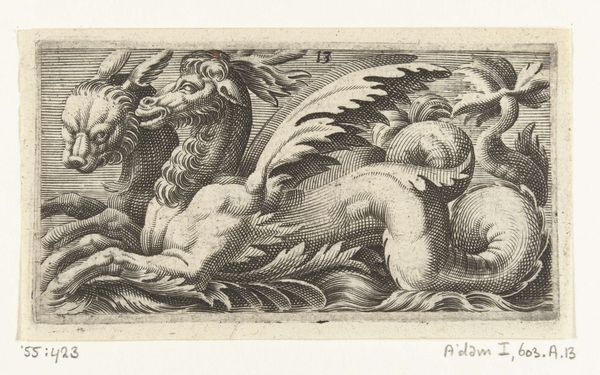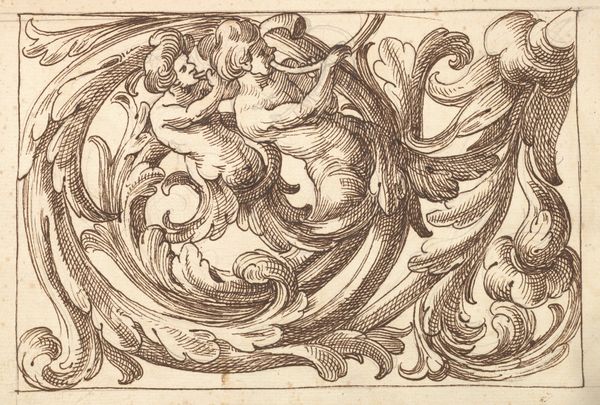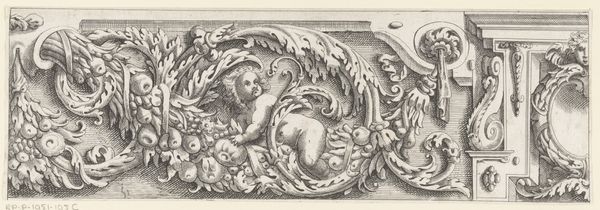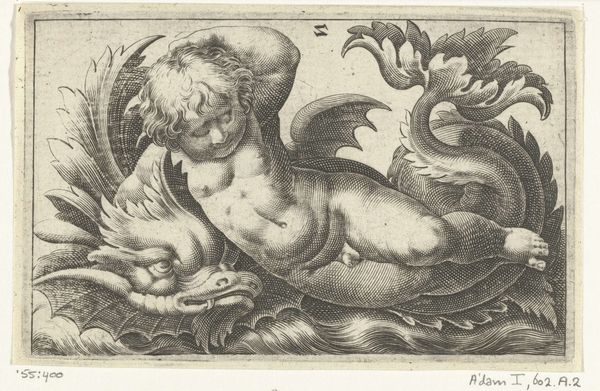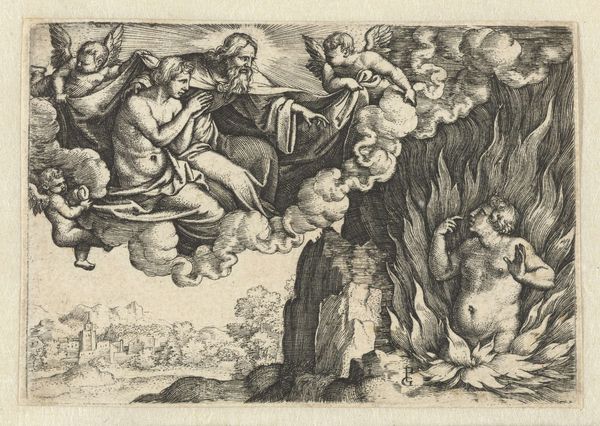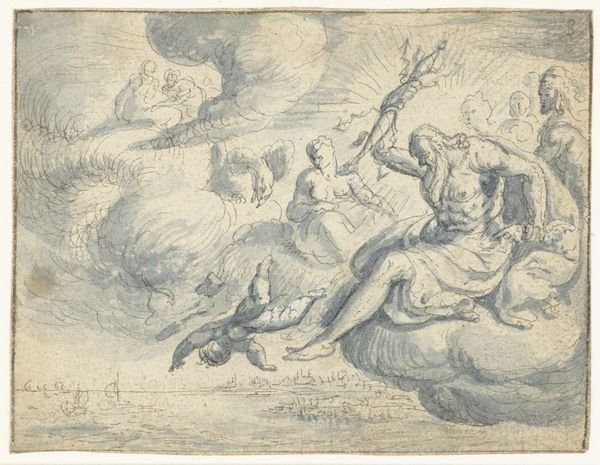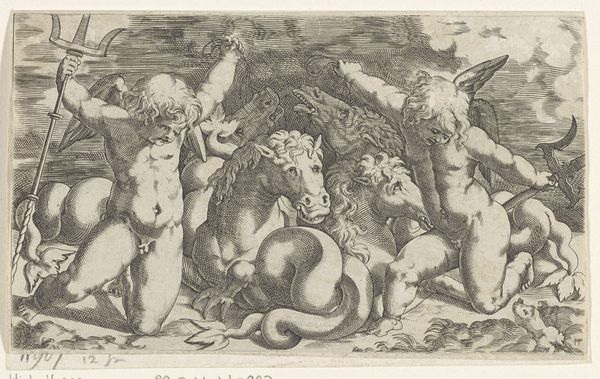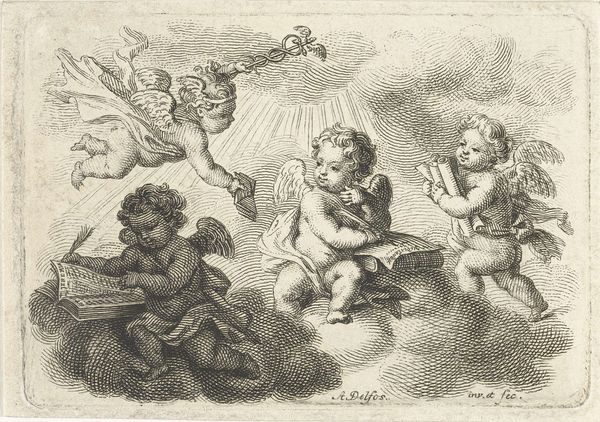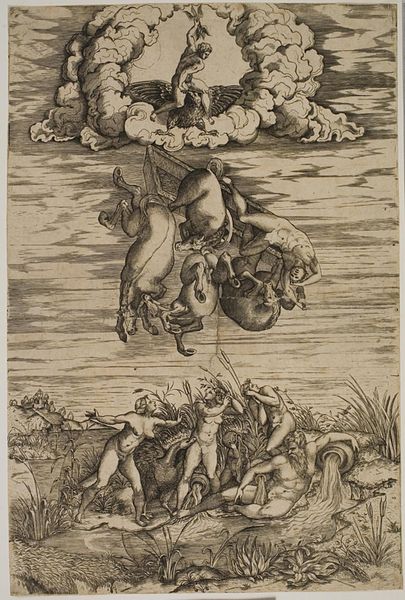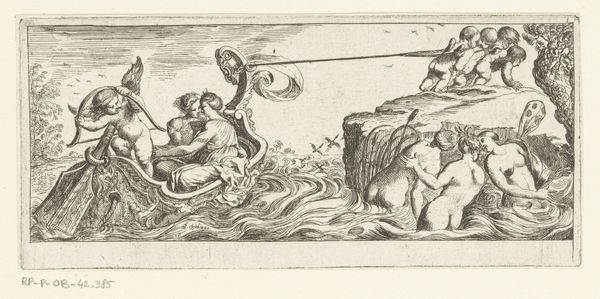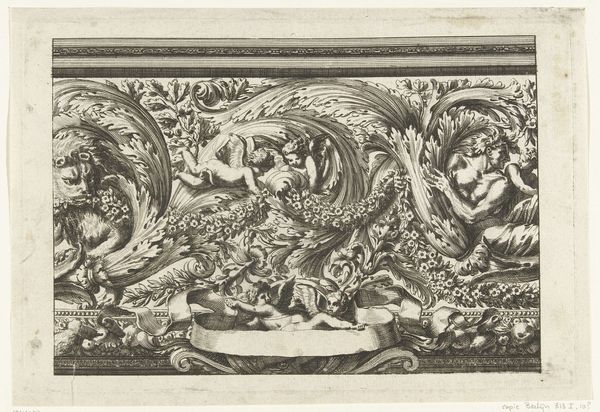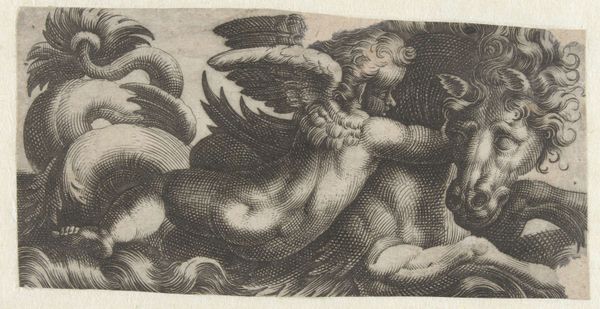
print, engraving
#
allegory
#
baroque
# print
#
pen illustration
#
old engraving style
#
pen work
#
engraving
Dimensions: height 65 mm, width 108 mm
Copyright: Rijks Museum: Open Domain
Pieter Tanjé made this small engraving, an Allegory of the Cross, sometime in the mid-18th century. It's pure printmaking, etched lines on a copper plate transferred to paper. The technique is inherently reproductive. Each impression is one of many, identical. You can see how the hand of the artist still makes itself felt. The burin, the tool used to incise the lines, allows for fine gradations of light and shadow, as in the cherubs’ faces. The swirls of the baroque frame, enclosing the cross and chalice, seem almost sculpted rather than engraved. Prints like these were made to be circulated widely, and to last. They testify to the engraver’s skill, but also to a whole system of production: paper-making, ink manufacture, distribution networks. Tanjé was not only an artist, but also a node in a web of commerce and communication. Paying close attention to materials and making helps us to see that even the most seemingly refined art is interwoven with labor and trade.
Comments
No comments
Be the first to comment and join the conversation on the ultimate creative platform.
